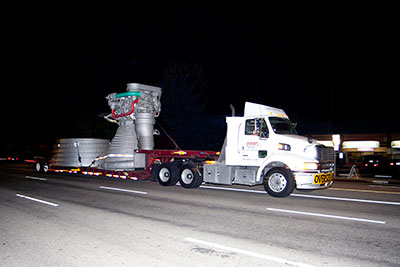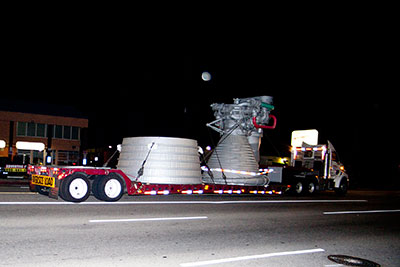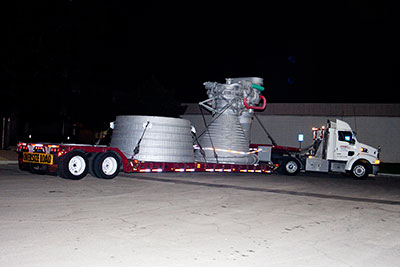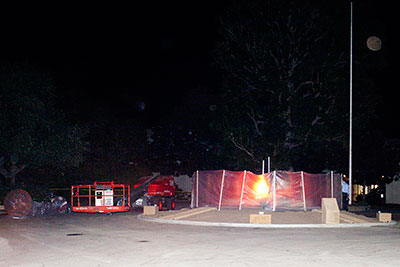 Space News space history and artifacts articles Messages space history discussion forums Sightings worldwide astronaut appearances Resources selected space history documents |
If you have previously registered, but forgotten your password, click here.
| ||||||||
| Robert Pearlman | Photos courtesy Ray Holt:  | |||||||
| Spacepsycho | I appreciate the photo credit but it was my mom Lilian and sister Desiree, who both live in the San Fernando Valley, who photographed the F-1 move. They met a wonderful woman who was in charge of the F-1 move for Aerojet, she told my sister that her father helped build all of the Apollo F-1 engines and it was like an old friend coming home. That said, I spoke with a gentleman who worked on all of the Apollo command modules in Downey, he told me about the CM SPS engines on stands that were being scrapped after the program was cancelled. He said the engines were sold for $1,000 each and one scrap dealer purchased all of them. There has to be just one of these engines in someone's garage. | |||||||
| Robert Pearlman | Almost three years after its F-1 engine display was moved, the 61-year-old Rocketdyne Propulsion & Power plant in Canoga Park is now being demolished, reports the Los Angeles Daily News. For the past week, backhoes and front loaders have been ripping down the north side of the abandoned rocket engine plant during a demolition expected to take nine months to a year. | |||||||
| cspg | Did the American Pickers (History Channel) — or anybody else — visit the facility before the start of the demolition? Picking up bits and pieces to create lucites?  | |||||||
| Robert Pearlman | From NASA's History Office: UTC [United Technologies Corporation] is seeking a highly-qualified professional curator/expert to spearhead an important interpretive program for commemoration of the former Rocketdyne Canoga Park plant (in the Canoga Park community of Los Angeles, California) in the history of manned space flight, with emphasis on the rockets and propulsion systems manufactured on-site. | |||||||
| Fra Mauro | I'm glad they are saving the engines but there is still something a little sad about another Apollo historic site being turned into a "sustainable urban neighborhood." Forgive the musings of a history geek. | |||||||
| Robert Pearlman | Heavy machinery has just about leveled the old Rocketdyne office and rocket engine manufacturing complex on Canoga Avenue in the West Valley, reports the Los Angeles Daily News. You could argue that the sprawling complex between Victory Boulevard and Vanowen Street qualified as a national treasure. The engines developed there powered everything from early intercontinental ballistic missiles to the Space Shuttle. And the company is still heavily involved in the nation's space exploration from its De Soto complex. | |||||||



